I have been disabled for 18 years following a car wreck. I have major mobility issues, nerve damage, and a pain disorder as a result of the accident.
I’ve taught kids with major intellectual and developmental disorders, physical injuries, genetic disorders, and significant brain injuries.
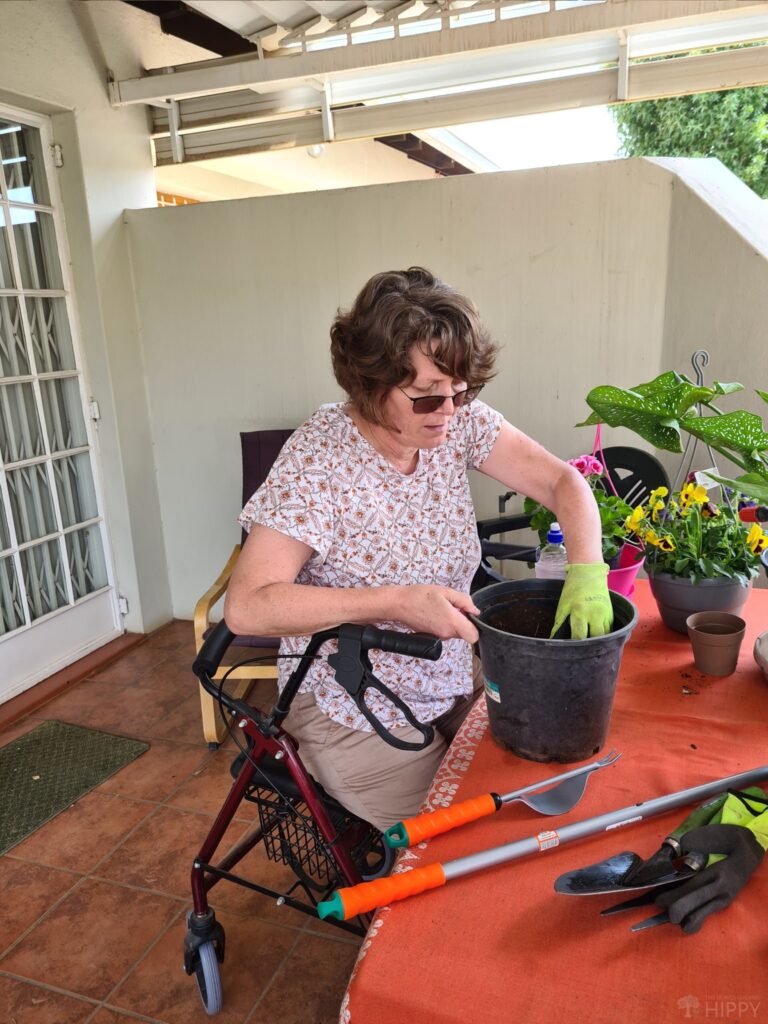
I have extensive experience working with kids in a place of safety that are crippled with PTSD because of unimaginable things they have been exposed to.
This makes writing this article a truly personal, heartfelt topic…
My own situation has made me passionate to help as many disabled people as possible, families living with a disabled loved one, care workers, and governmental and private sectors willing to serve disabled communities by building communal gardens where people living with disabilities can learn new skills, reduce stress, get exercise, and socialize.
I hope this article will help you to learn or equip you to garden with a disability or teach or work with someone with a disability.
Table of Contents
Benefits of Gardening for the Disabled
Gardening is one of the best therapies out there for able-bodied and disabled people. Even just getting outdoors and into the sun has overwhelming benefits.
In addition to the vitamin D exposure from being in the sun, it is great exercise, is stimulating, and if done with other disabled people, a caregiver, or family member, it’s a great place to build relationships and develop friendships.
Plus, gardening can:
- Increase muscle strength
- Soothe and calm
- Lower the need for medication (it does not negate the need for medication, it can only reduce the amount of medication needed)
- Improve the attention span
- Exposure to the sun can introduce greater levels of vitamin D which leads to stronger bones, an immune system boost, increase the body’s ability to heal wounds, and repair cellular damage
- Reduce pain
- Improve focus
- Give a great workout
- Improve the bodies flexibility
- It is very tactile for helping reduce tactile defensiveness
- Encourage social interaction
- Reduce stress
- Build up self-confidence
- Build up self-esteem
- And, most importantly, build up a person’s feelings of belonging and value in society, whether just gardening at home or in a communal environment
So much research has been done on the therapeutic aspect of gardening for all people struggling with so many different disabilities.
Studies have shown that gardening reduces stress, reduces pain, improves attention and focus, builds up self-confidence, and can lead to the lowering of needed medications (especially pain medication).
In fact, because of its therapeutic abilities, an ever-growing string of garden therapy institutions is taking shape:
- Retirement homes are building vegetable gardens and donating the produce to the underprivileged.
- Schools for kids with disabilities are using vegetable and flower gardens for kids to calm them, to get exercise, to help them interact with each other, and most importantly, to build up their self-esteem and give them a sense of pride when they get to take food, they have grown home to feed their families.
- Communal, public gardens are springing up all over the world, anyone can work in them and as people need food, they can walk home from work, pass the garden and harvest what they need to feed their families.
- Very often, schools for learners with disabilities, centers for adults with disabilities, or elderly citizens living in the area or drive to the garden from local retirement villages tend to these gardens.
People with disabilities learn that they are of great value to their community as they are feeding the community (especially in areas where the population is disadvantaged in one way or another).
Gardening is great exercise as it builds flexibility, strength, and endurance, all of which will help strengthen ailing bodies…
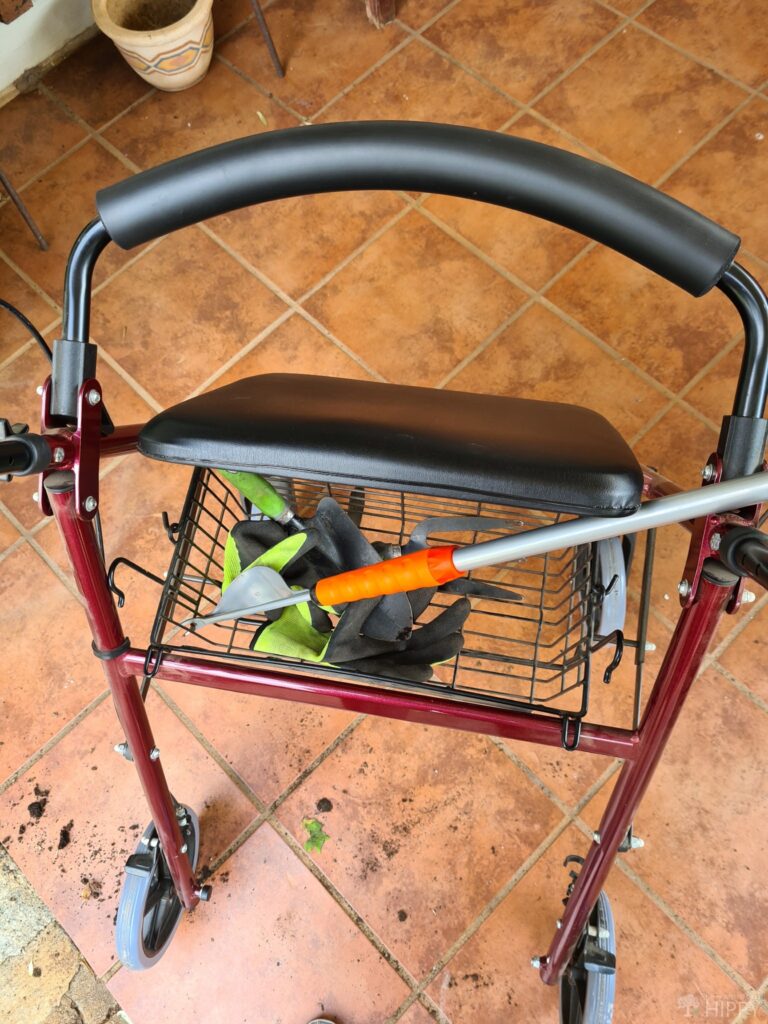
Building an ‘Enabled’ Garden
If we are going to point out disabilities and highlight them as being abnormalities, I am going to label every person on earth: DISABLED!
We are all vulnerable and imperfect.
But a conventionally handicapped person has physical and mental needs that can only be overcome by making some modifications to the environment they are in to meet their needs safely.
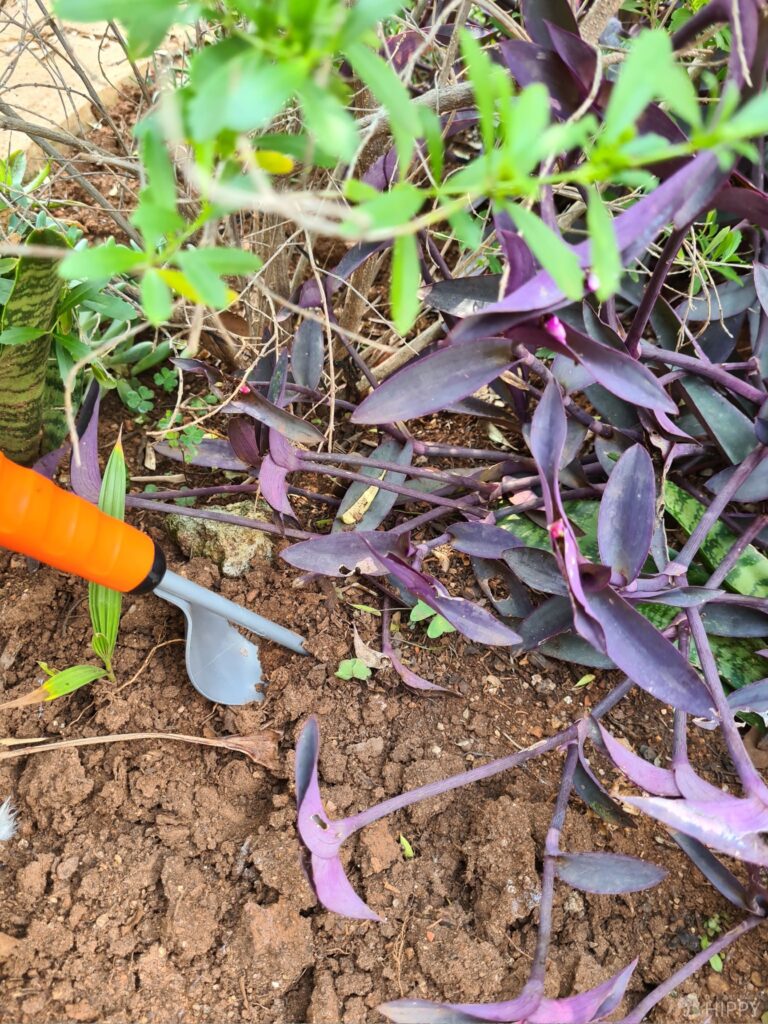
An enabled garden simply incorporates creative solutions that make the garden safer, more accessible, and more stimulating.
Building a safe, enabled garden can include:
- Raised beds
- Wider walkways
- Paved walkways
- Flat walkways
- Nonslip surfaces
- Rest areas
- Navigational features
- Areas to safely relax or play
- Fun, stimulating features
- Ergonomic or modified tools
- Handrails
- Audible features to help the blind navigate the garden
- Textured grips on tools and railings to make them easier to hold onto
- Wheelchair-friendly tables and beds – make sure the table or workbench is high enough for a wheelchair to fit comfortably underneath
- Accessible toilets
- Narrow beds
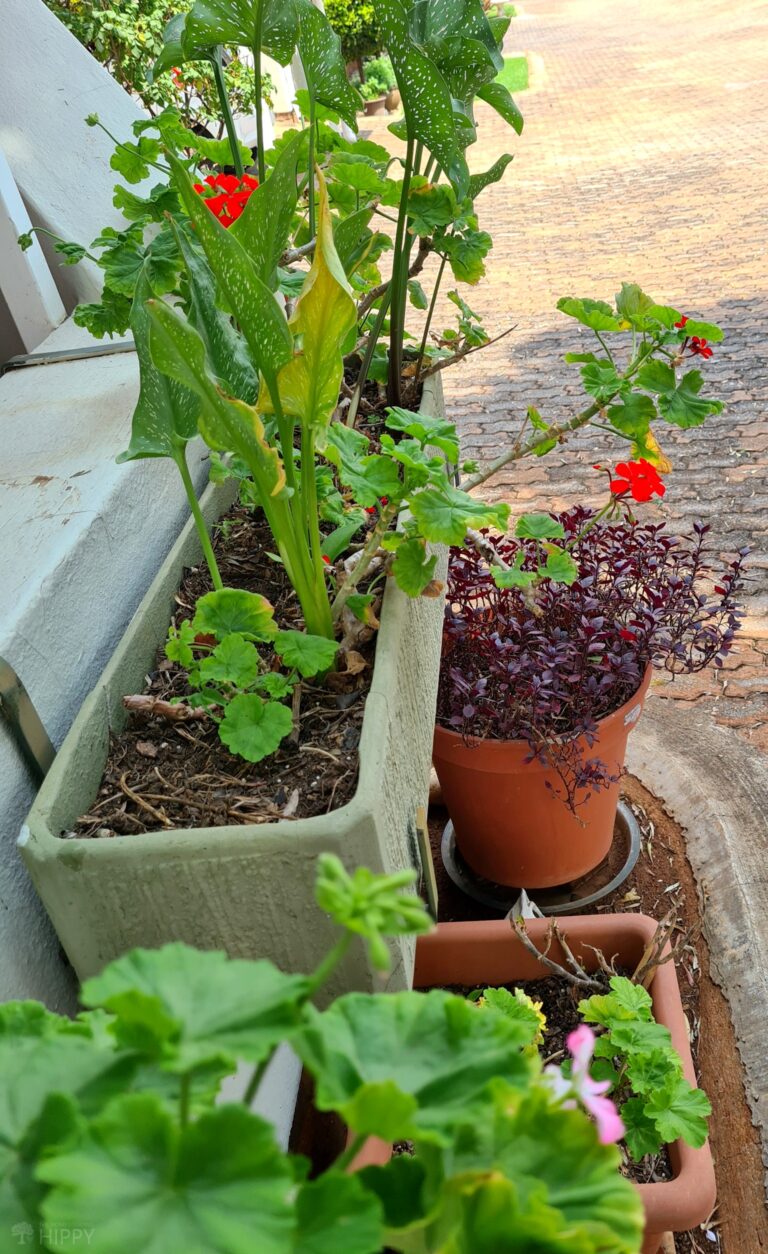
Gardening for the Blind
Yes, gardening is very much possible and enjoyable for blind people.
There are great braille aides available for blind people to help map out each section of a garden to know what is planted where so that maintenance and harvesting are easy.
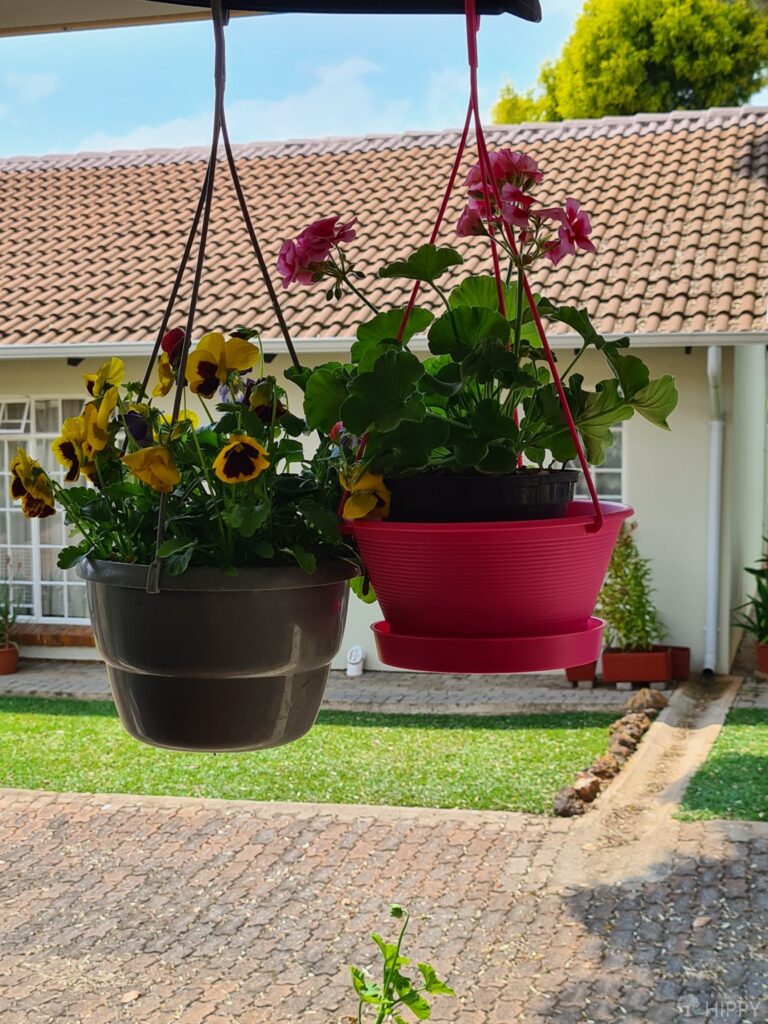
It’s easy to adapt your garden to be a sensory garden with gorgeous smelling flowers, and in beds that are accessible, and navigational features for people with poor eyesight or no eyesight.
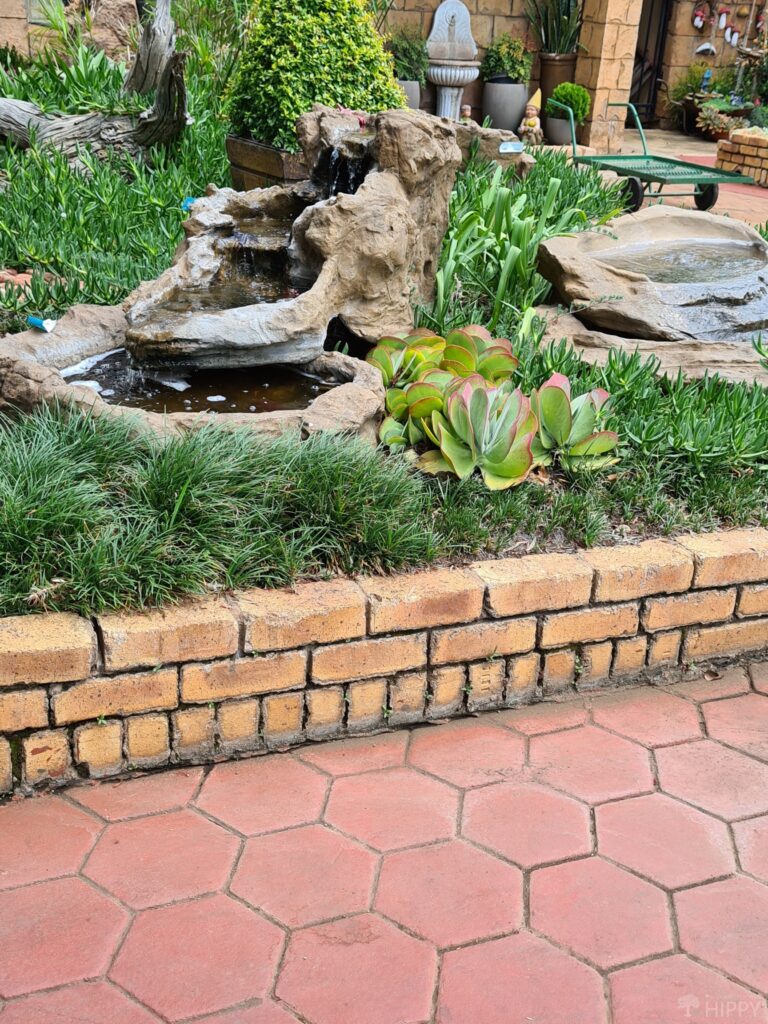
Here are some things to consider when planning a garden for the blind or partially sighted:
- Ground beds work well if they have a border that can be used to navigate where you have planted flowers or vegetables
- Add ground-level railings that indicate what bed you are at
- Grow hardy plants that can withstand a little neglect; if you miss a plant once, it will survive until you come back to that bed
- Hanging planters also work well as it is easy to find plants for pruning or watering
- Grow strong scented plants
- Grow textured plants that will help you identify the plant
- Use a pulley system to lower plants in hanging planters to care for the plants
- Use a pole with a hook to lower hanging plants
- Use wind chimes, water features, or other features to orient yourself
- Grow plants in totes or containers; I do this a lot, I am not blind, but my dad is, it is easy to add a braille guide to identify what is in a bed; you can place them anywhere you want that is accessible for you; they make ideal conditions as you can use the best soil in them and you can move them to a different spot easily if they are not thriving where they are
- Shallow containers for herbs to grow on windowsills are easy to care for and they will make your house smell fresh and earthy
- Keep your layout simple
- Keep your garden beds narrow to allow for accessible gardening without too much stretching as much can be missed if beds are broad
- Learn the shape of leaves and smell of weeds to help you identify them
- Build good pathways without any obstructions
- Differentiate the texture on the pathways to make it easier to know where you are
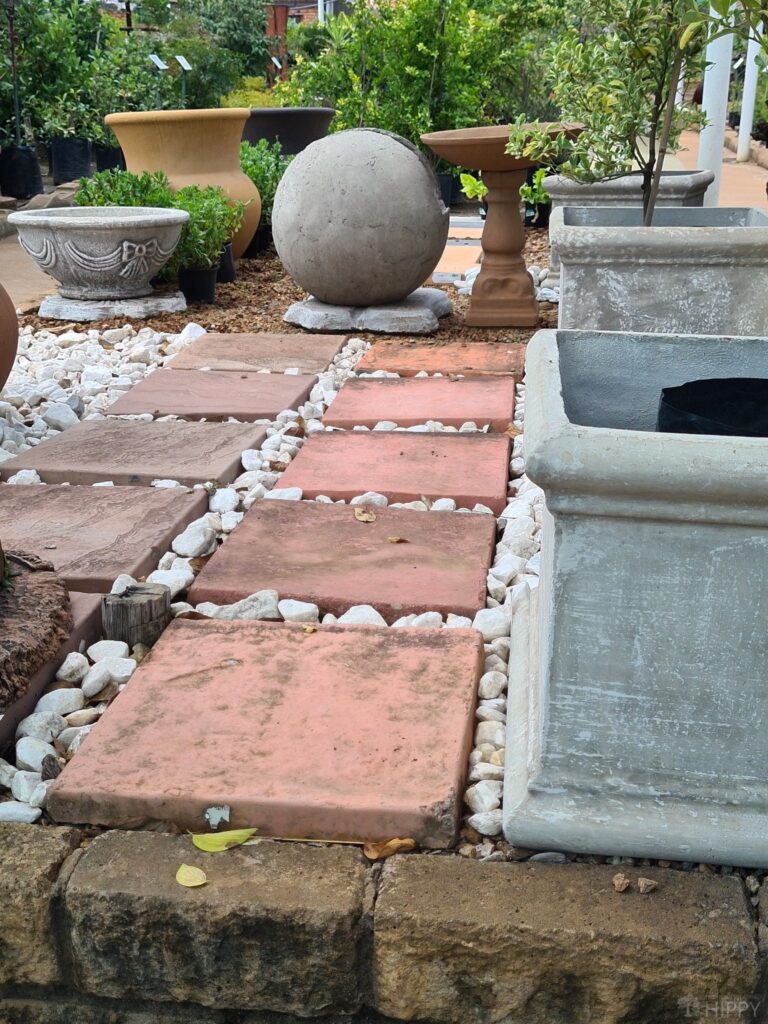
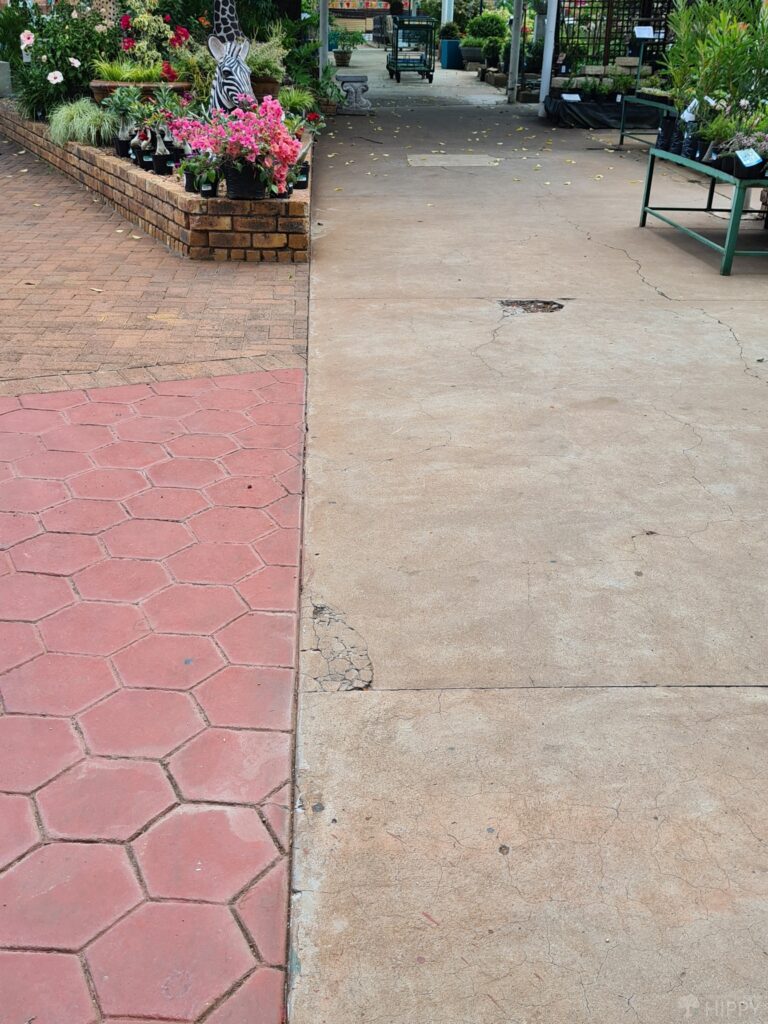
- Use short-handled tools that allow you to garden with one hand while touching the plants with your other hand
- If you have some vision, use brightly colored tools that are easy to find. Bright colors are easy to find whether you are able to see or are partially sighted; choose neon colors or orange, don’t go for green, green blends into the bed too easily making finding your tools that much harder
- Use popsicle sticks to mark off where you have planted so that you can differentiate between what you have planted and any weeds that may come up
- Make records of everything that happens in your garden; you can record when you planted a vegetable and when it should be ready to harvest
- Raised beds are easy to follow and work around
- Plant by scent, often visually impaired people have a heightened sense of smell
- If you are using scent to guide you, do not plant too many strong scented plants as this can become confusing
- For those who have some sight but struggle to differentiate, plant by color in different beds
- Use a tool pouch or bucket and attach your tools with string so that you can follow the string to your tool and also help you to put your tools away safer
- If you have some sight, paint your boxes in bright colors to identify what is in each box and where the boxes are
- If you a partially sighted, use large font laminated signs to identify the plants in a box
- Use braille to plan out your garden and to identify beds and what is in each bed
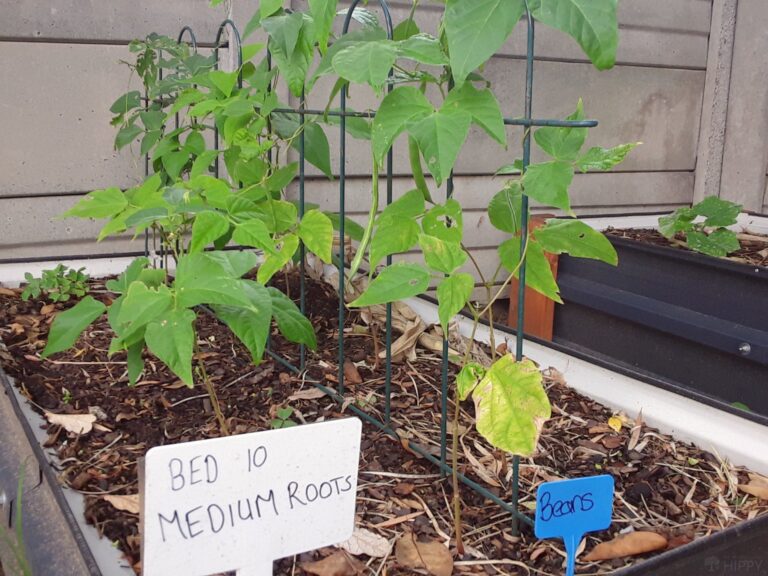
If you are planting in big containers and you want to grow vegetables, broccoli, cauliflower, peppers, beets, beans, tomatoes, cabbage, potatoes, chard, celery, kale, collards, and carrots all do very well in large containers.
In smaller containers you can plant spinach, herbs, lettuce, and radishes.
If you do use containers, drill holes in the base of the container and stand the container on bricks to ensure good drainage.
Gardening for Children with Disabilities
Gardening for children who have disabilities can be very rewarding. Through gardening, they can:
- Learn to care for the environment
- Learn to interact with others
- Improve concentration
- Learn to care for living things
- Improve motor skills
- Reduce stress levels
- Improve self-confidence and social skills
- Enhance their creative side
- Learn to cope with challenging tasks on an emotional level
- Learn problem-solving skills
- Cope with anxiety and frustration
- Improve memory and focus
- Improve language skills
- Lift their mood
- Improve balance and coordination
- Improve muscle strength
- Learn to endure for the rewards
- Learn to follow directions
- Learn to work independently
- Improve communication skills
- Learn patience
- Learn the feeling of achievement
- Feel a sense of purpose
- Explore their sense of hearing, smell, and touch
- Feel a sense of value in society
As many people with intellectual disabilities are unable to assist in planning a garden, this planning falls to loved ones or caregivers.
Look at the disabilities of the children and design the layout accordingly.
Start with what you imagine the perfect garden would look like and then adapt each aspect of the garden to make accessible beds that are fun for the kids who will be working in the garden.
You can use themes for different sections to accommodate younger kids all the way through to adults.
Take into account the range of disabilities and the adaptations needed to accommodate each:
Blind children would need the same layout as blind adults, and then some.
They’ll need more landmarks, things like motion detector frogs that croak as someone walks past them, wind chimes, ground level-beds, textured plants, strong scented plants, raised beds, and fun things like big sandcastle buckets, carts, or big trucks to hold all gardening tools.
Children in wheelchairs will need wider passageways that are properly paved for their wheelchairs.
Intellectually challenged people are often not the best drivers, they need a bit more space to reduce the risk of harming themselves or others with as much freedom as possible from overly involved care workers.
They will need the beds to be very narrow so that it is easy to reach all the plants; they may need plants that are raised and lowered on a pulley system.
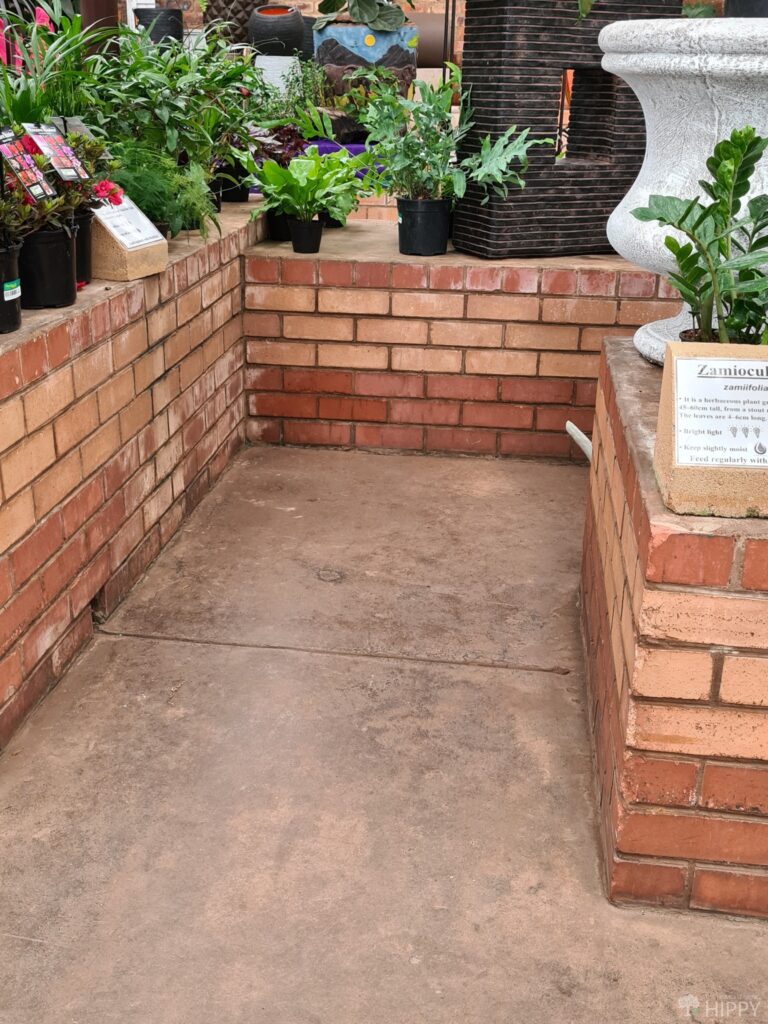
Kids with Down syndrome may not need wider walkways or raised beds, but they will need a fun, stimulating environment, with lots of color and texture; the level of the Dd plants that are quick growing sown syndrome will dictate how much adaptation is needed.
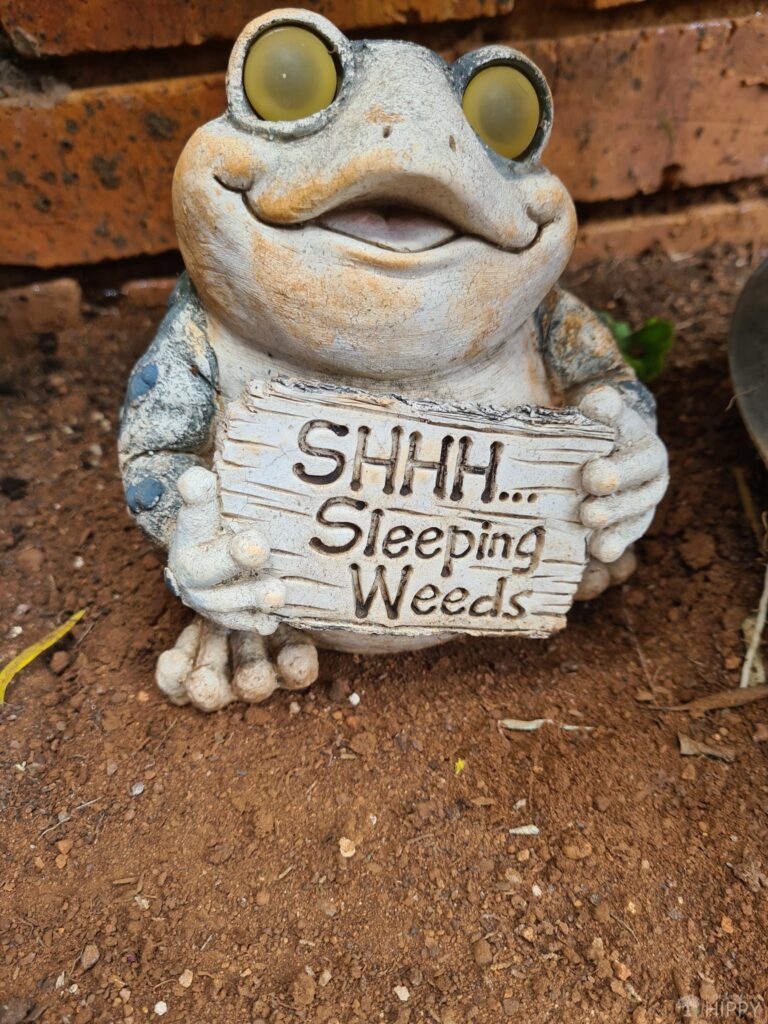
Children with ADD (Attention Deficit Disorder) or ADHD (Attention Deficit Hyperactivity Disorder) will need a lot more gardening tasks to keep them interested.
Using longer beds or beds they can move all around will help them keep moving as much as they need to while gardening.
Throw in non-gardening tasks between gardening tasks to give their minds a break like filling a bird or squirrel feeder, clean a water feature (even if another person just cleaned it ten minutes ago); alternating between flower and vegetable beds daily, sweeping up messed soil on the walkway.
Children with developmental delays will require a lot of very tactile stimulation; plant a variety of fragrant plants; a variety of vegetables; plants with very different textures and shapes; wide beds with lots of sand to play in while they work will help stimulate their minds and bodies.
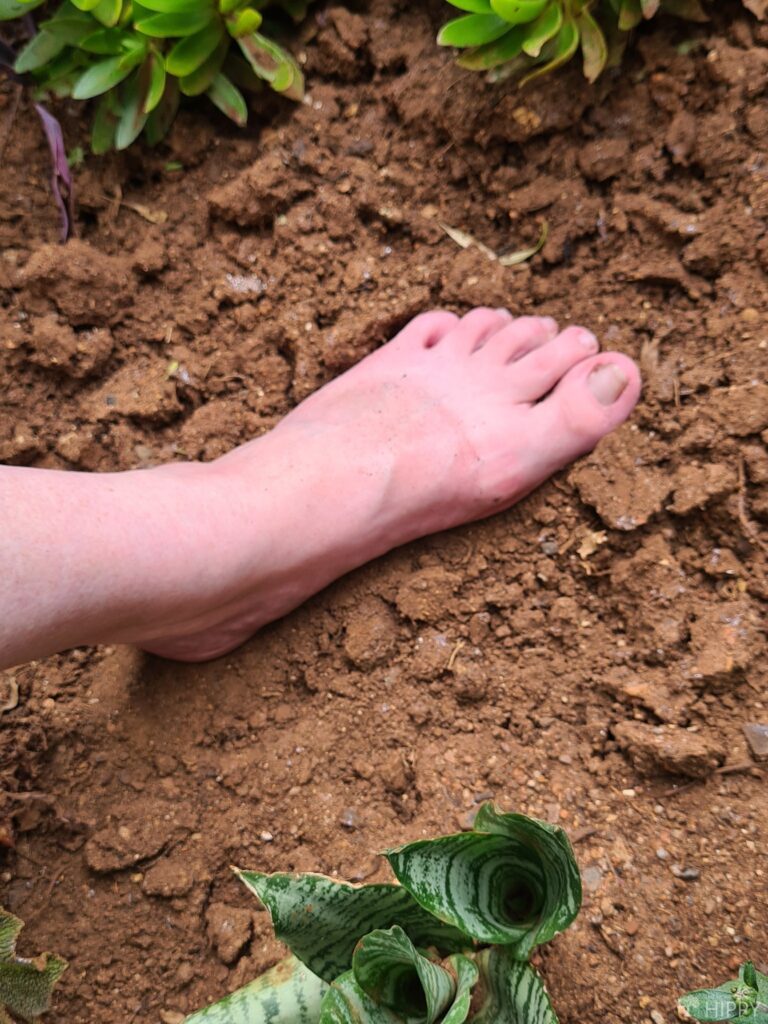
Kids with aggression disorders will benefit greatly from gardening, they will need a lot of organization in the garden – think fixed routine where everything has its place.
These children need to understand routine and they need to know that there is a right place and a wrong place for everything.
Build structured beds with layers of height; lots of specific beds where only one or two veggies grow in one bed; lots of layers of color; lots of strong scents; hardy plants; and plants that are quickly growing so that growth is easy to see to build anticipation for a positive result (flowers or veggies).
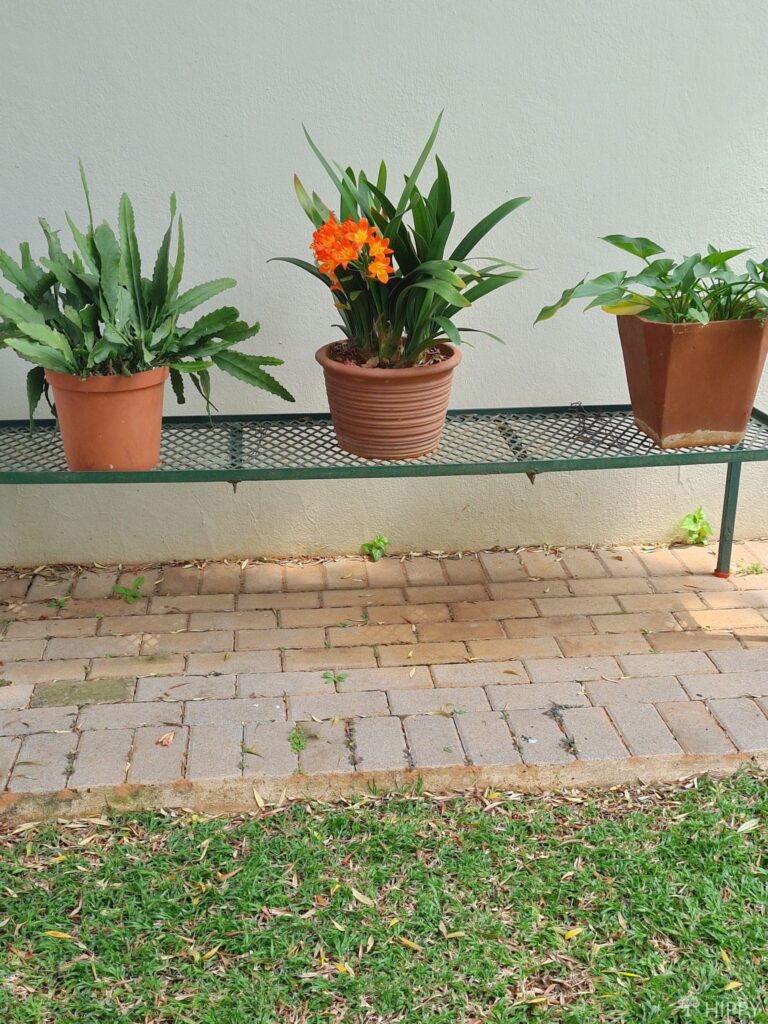
Sensory gardens are good for all people with intellectual disabilities.
There’s another form of disability that not many people talk about, but I can promise that your kids fall into this category more than adults do because adults have learned many more coping mechanisms.
Children who have been traumatized, children from broken homes, children from abusive homes, children brought up in poverty, children exposed to war or various substances, children who have witnessed violence, all suffer from post-traumatic stress syndrome to one degree or another.
As a young woman, I worked at a place of safety myself back in the day. These kids were too young to know how to cope with what was happening in their worlds…
These children had a really hard time talking, but when they were out “helping” in the garden, they were able to talk without the scrutinizing eyes of adults assessing them, and without the pressure of being asked to discuss what they were going through.
In the garden we didn’t look at them while they talked (not focusing our eyes on them anyway), they were able to look at the plants as they worked and conversations started at a stranger in a frightening world, to an adult who could be relied upon, to a friend, to a confidant, to a counselor.
In my opinion, these children were the most severely disabled kids I ever worked or had relationships with…
These kids need a well-organized garden; they need structure in the beds; they need to be a part of the process, choosing plants to grow; choosing where to plant their plants; they need to be given choices that they will see the results of reasonably quickly.
A sensory garden that incorporates lots of smells, lots of color, lots of different textures, different sounds like wind chimes or water features, and where possible, an environment where animals are involved – never underestimate the joy of a vermiculture bin to a young boy.
Bring in themes with figurines, swings, sand-play areas, everything you can think of to help these kids relax, remove stress, build confidence and trust with you.
For all disabled children, safety is of paramount importance. Make sure walkways are clear and ensure the garden is free of any toxic plants, and if you have water features, make sure the power supply is out of easy reach of little hands.
- Build in watering mechanisms such that there are no hose pipes laying over walkways; consider using a sprinkler system; or, as watering a garden can be even more tranquil and enjoyable than actually digging and planting, keep a hose system in place that can only be used in one section of the garden and is off of the ground.
- Use a stool or kneeler stool while working in the garden
- Use long-handled ergonomic tools to ensure that not too much stretching or bending is needed
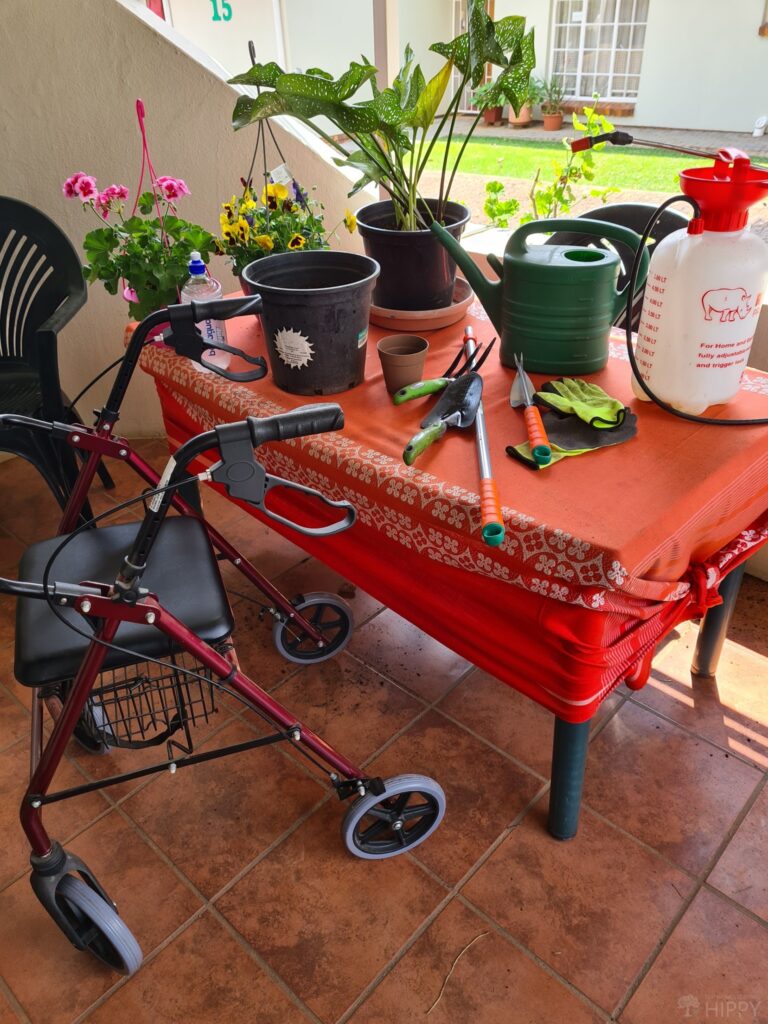
Gardening for Adults with Intellectual Disabilities
Gardening provides adults with intellectual disabilities a safe space to relax. They need a place away from prying eyes, judgment, and people with too much time and not enough compassion to reflect, learn, and enjoy nature.
Adults with intellectual disabilities have often been subjected to ridicule and bullying at one point in their lives or another. For them, gardening can be very rewarding.
They can take great pride in the beauty they have created in their garden, or the food they have grown for themselves – how many people with a high IQ can say that they can sustain themselves without running to Woolworths every day? ?
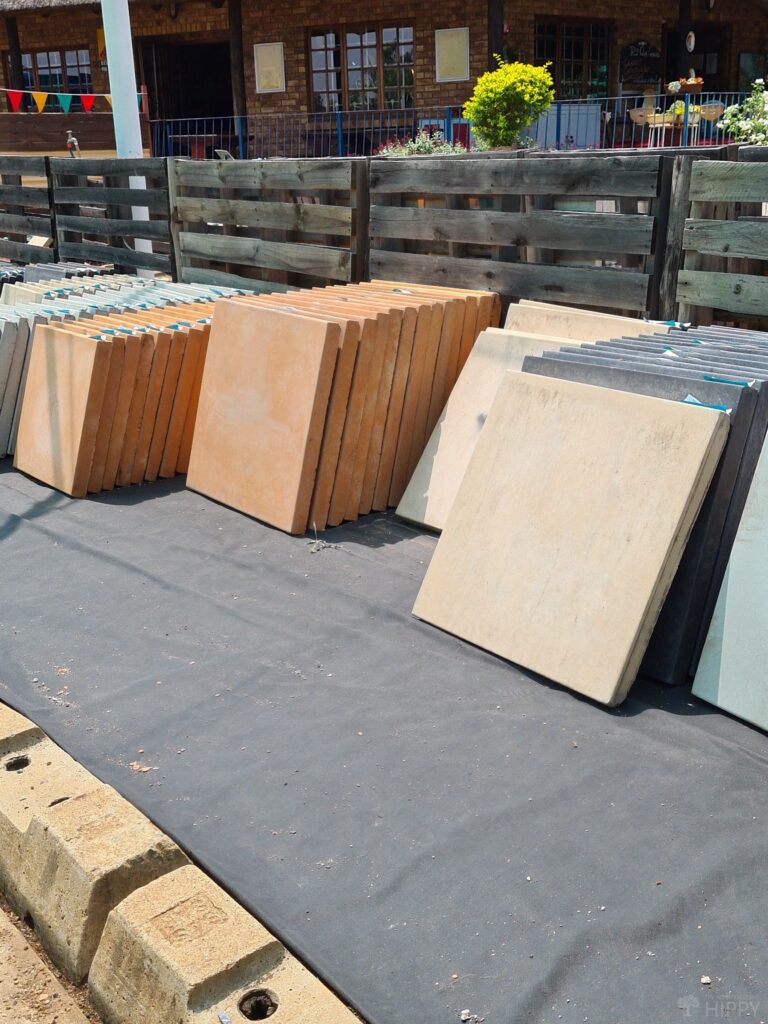
Gardening can lead to a sense of inclusion in society, of pride as they provide food for the table, and of responsibility for the life of the plants they care for.
Their gardens don’t need to be conventional, either. In fact, the more interesting, the better!
- They can have indoor gardens where it is safe to let them work without interference
- They can be a part of communal gardens where they can socialize with other adults who face the same or similar challenges as they do
- They can have flowerpots in their homes or in their bedrooms that they are responsible (if needed, at the guidance of a caregiver) for caring for
- Using vertical gardens will bring gardeners into closer proximity to each other to instigate social interaction.
- Planting and watering trees are easy ways to stimulate someone who does not want to garden every day
- Use lots of color and fragrances to stimulate their senses
- Add water features, Zen gardens, chimes, and relaxation areas throughout the garden
- Provide a fixed schedule where possible of tasks that need to be attended to on a daily basis
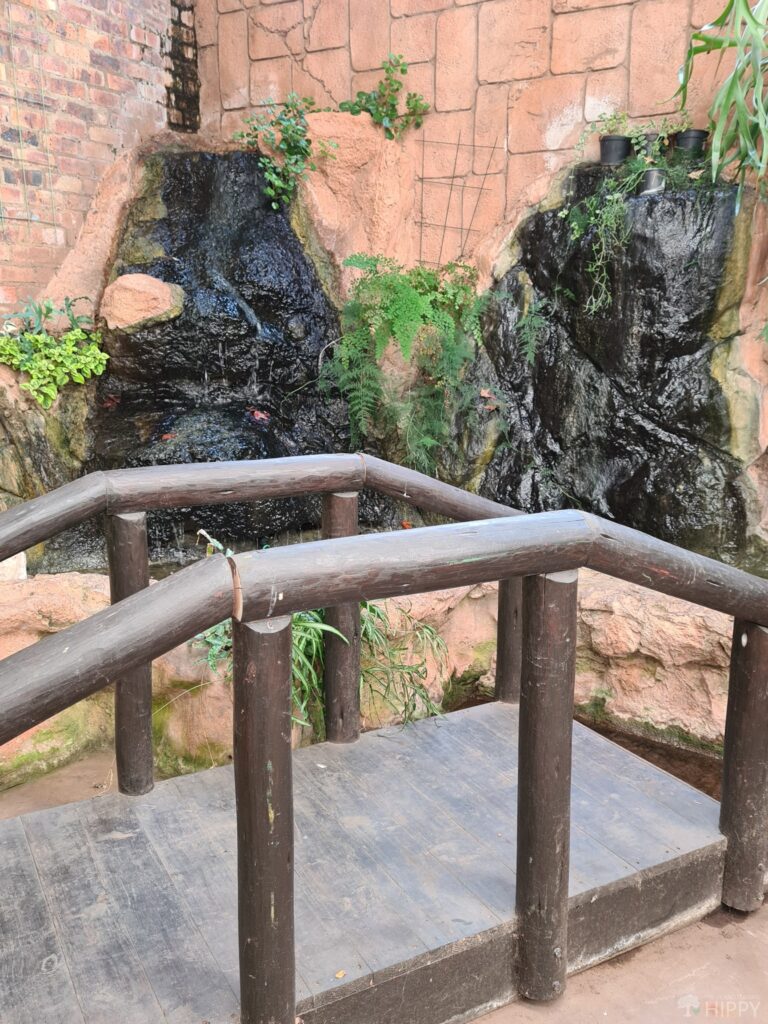
Gardening for Wheelchair-Bound People
Wheelchair-bound people have a wide range of special environmental needs that may not be available in the average garden.
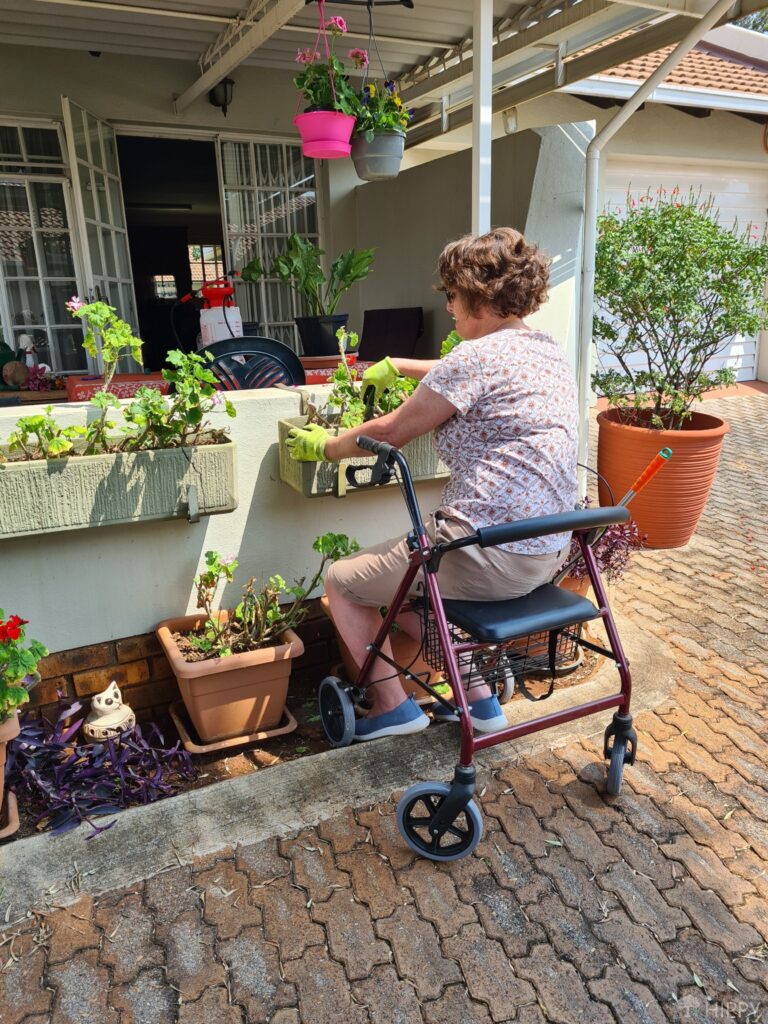
For people in wheelchairs, everything requires either careful, thoughtful planning, or it needs a caregiver to be available to reach when needed, or it needs adapted tools to help grasp things far away, pick things up from the floor, or reach further into a bed.
The layout of the garden can greatly enhance the pleasure of gardening from a wheelchair.
- Vertical gardens work well for people in wheelchairs or those who use walkers because it limits the need to stretch to reach into beds
- Raised beds are essential, a person in a wheelchair cannot safely reach down to work on ground level
- Use a rotary vertical garden or a pole to bring retractable beds closer
- Planting plants that can grow on fences, trellis, or walls reduces the need to bend over and it keeps plants accessible
- Pathways need to be 1.5 meters wide for a single wheelchair to pass through; if there’s more than one wheelchair user, paths should be at least 3 meters wide to allow wheelchairs to pass each other
- Pathways need to be paved, smooth, level, and free of clutter
- Special attention needs to be given to the area where a wheelchair needs to navigate a corner as corners can be very difficult to navigate if there is a sharp curve or the crossway is not at even angles
- Long-handled tools will assist people in wheelchairs reach deep into beds
- Provide tables that fit wheelchairs so that gardeners sit comfortably to work to pot, plant, and grow seedlings
- Consider planting raised beds that are set up as tables that a wheelchair can fit under
- Provide wheelchair-friendly toilets that are close by, bathroom breaks can take a while if the gardener has to go back indoors to use the restroom
- Plant in raised beds that are a maximum of 30 inches high and five feet wide
- Make walkways that run all the way around raised beds for accessibility
- Use raised containers, window boxes, and retractable hanging pots
- Use containers on wheels or wheelbarrows that can be moved aside to allow a wheelchair passage
- Use spray bottles, watering cans, or hose fittings that can be turned on or off at the hose rather than at the tap
- Planters should be placed so that the gardener can work to his or her side rather than working to the front
- Use a rolling cart that can be pulled to carry tools and plants or seedlings
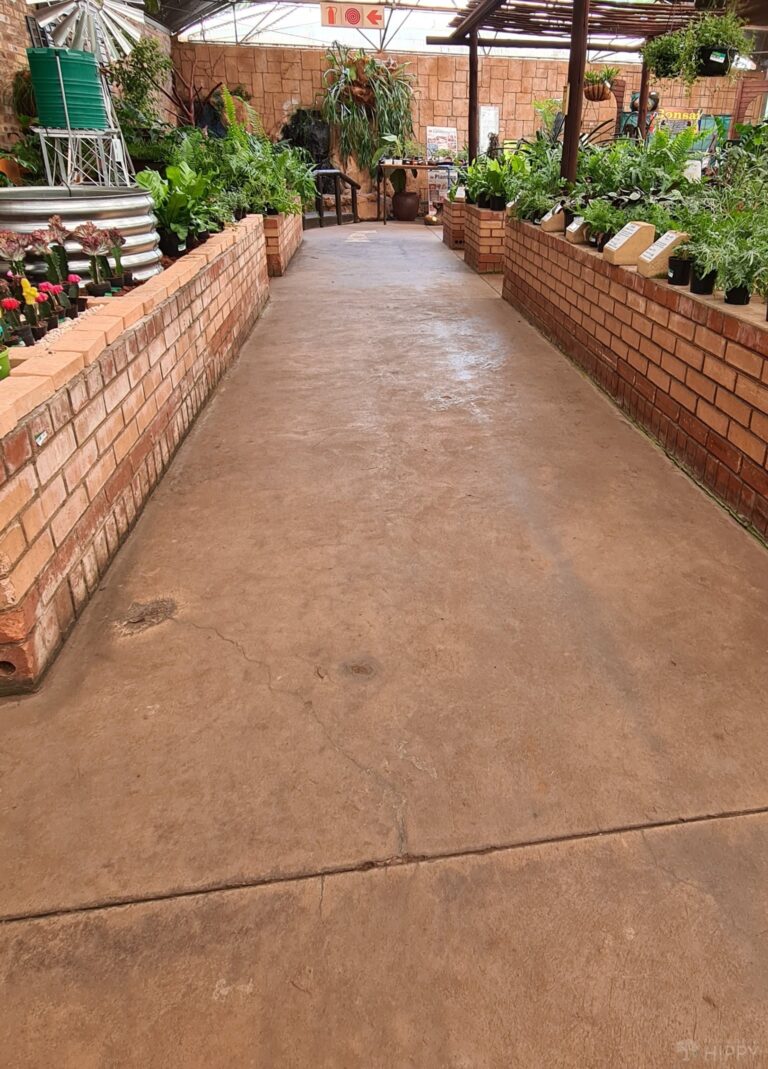
Gardening Tools for the Disabled
There are many tools to make gardening easier for the disabled. Many of the available tools are great for people without any limitations.
If you suffer from backaches, sore joints, arthritis, or spend a lot of time in the garden, you should definitely look at some of these tools.
Available tools include:
- Gloves with a sticky surface or gripper dots to improve grip
- Padding or tape grip handles on tools
- Extender arms
- Ergonomic tools
- Lightweight tools
- Cushioned chairs
- Long handled tools
- Water spray bottles
- Railings
- Nonslip mats
- Raised beds
- Long handled hooks
- Blunt tipped tools
- Rotating beds
- Vertical beds
- Wheelchair-friendly work benches
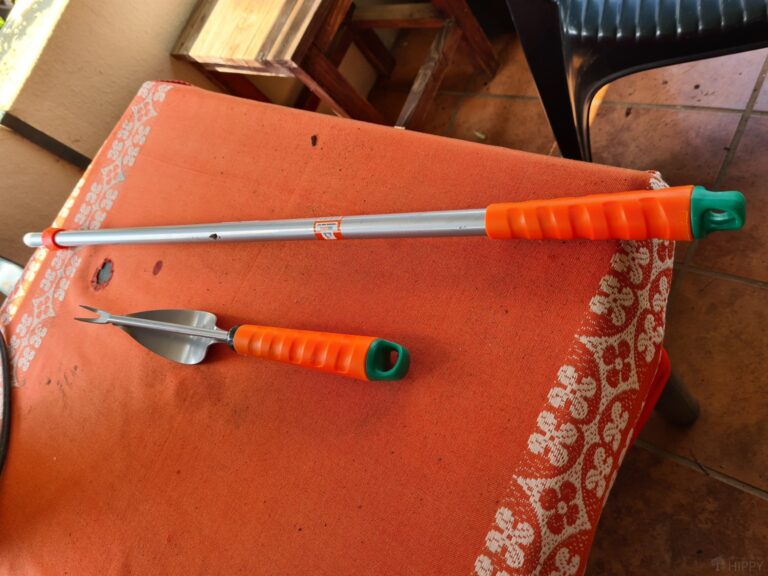
Activities for the Disabled in the Garden
There are lots of safe activities in the garden for people living with disabilities.
Watering plants, loosening soil, sowing plants, planting seedlings, pruning, mulching, and weeding are all possible for challenged people.
There are also fun activities to enjoy the bounty from the garden. Many disabled people enjoy flower arranging and even sell their beautiful arrangements.
Arts and crafts using leaves, dried flowers, grass, seeds, soil, and other materials are a fun way to extend socialization, communication, and be creative.
Of course, the biggest payoff is putting food on the table. Having grown vegetables and edible flowers, harvesting, cooking, and plating can extend intellectual stimulation, learn skills in the kitchen, and build self-confidence, and create a sense of value to society.

Conclusion
There is no question about the effects of gardening on the mind, body, and soul. It promotes independence for people with disabilities acquired through accidents, genetic misfortune, illness, trauma, or even self-inflicted harm.
People living with disabilities are still human beings. They still require life skills, they still need an environment in which to thrive, they still need socialization, they still need to be equipped with an environment in which to thrive, they need encouragement, advice, positive reinforcement, and exercise.
If you are building a disabled-friendly garden, try to see the world through the eyes and abilities of the disabled person or persons.
If you are designing a garden for folks in wheelchairs, spend a day in the garden in a wheelchair or on a rolling office chair…
If you’re building a garden for people who are partially sighted or blind, spend a day in the garden blindfolded…
If you are designing a garden for folks who are older, work in the garden for a day at an incredibly slow pace, in very wide beds that require a lot of stretching.
This is because stretching can put a lot of strain on a frail body. You’ll soon find out how painful gardening for the elderly can be.
If the gardening you’re designing is for deaf people get ten friends together, put them in a small garden with sound-suppressing earbuds in, and armed with a paintbrush with bright red paint on the brush and have them move about without turning into someone else’s paintbrush.
When you are all covered with paint, imagine the danger of a gardening tool to someone who doesn’t hear you coming up behind them.
If the person working the garden is intellectually disabled, imagine the one boss who thought he or she was the one person in the world with the highest IQ, and try to see the world through his or her eyes for a day. ?
This article is from one disabled person to another. I hope you’ve enjoyed it and learned a thing or two about gardening with challenges.
If you have any tips on what works for you in the garden, please share in the comments below.
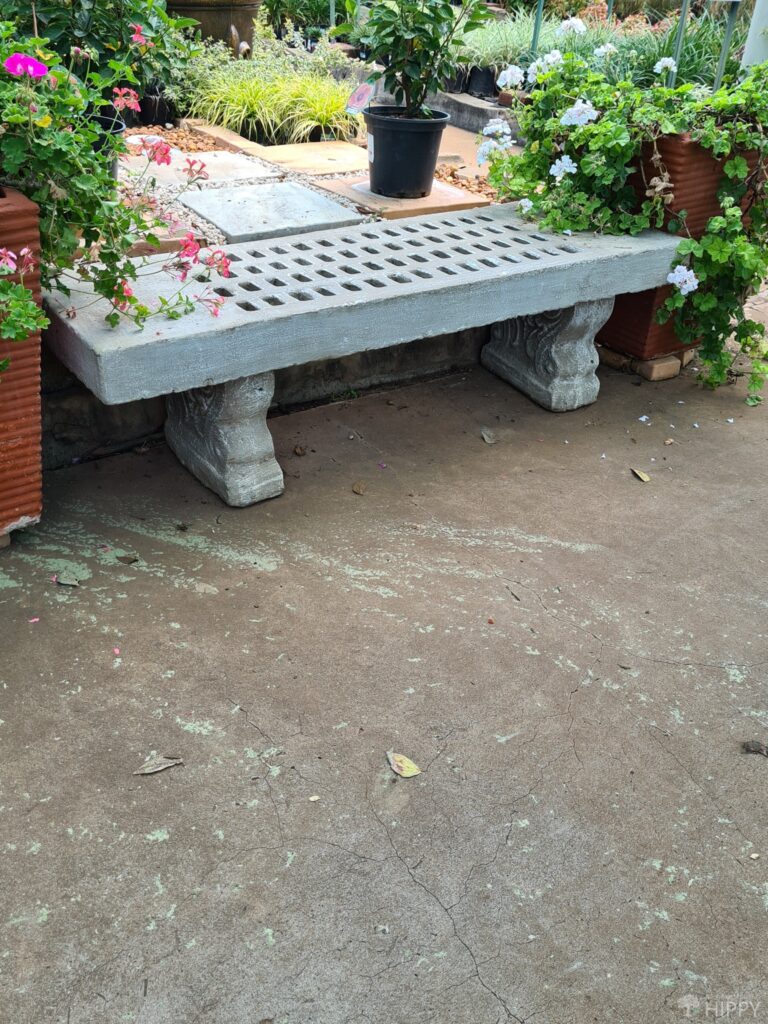
FAQs
It absolutely is. The aim of a therapist is to heal the mind AND body.
Occupational therapists use gardening to improve muscle strength, coordination, how to use your body in a way that can promote physical well-being, and bone density from being in the sunlight, but the effects on a person’s psyche are astronomical.
Gardening is a natural stress reliever that teaches valuable life skills, like nurturing, delayed gratification, how to set reachable goals, cope with stress and depression, promote independence, increase social bonds, and talk through issues in a non-confrontational environment.
It also provides a sense of belonging and value to society, promotes a feeling of achievement, self-worth, and self-confidence.
Perennials, marigolds, cherry tomatoes, strawberries, and herbs like rosemary and thyme all grow quickly and do not need a lot of work. They need weeding and watering, and in the case of perennials, they will need pruning.
A sensory garden incorporates a variety of sensory stimulation. Color, fragrances, tactile experiences with multiple textured plants, auditory features, ambulatory accessibilities, emotional support and guidance, and edible flowers and vegetables to excite the taste buds.
Sensory plants are plants like ferns, succulents, reeds and more; the textures of the plants encourage gardeners to experiment and explore the textures safely and in doing so open the gardener to new experiences.
Research has shown that gardening activates the brain in a way that leads to the production of serotonin – a hormone that creates a sense of overall wellness, joy, and calm.
It also releases dopamine which is a hormone that fosters an overall sense of wellbeing.
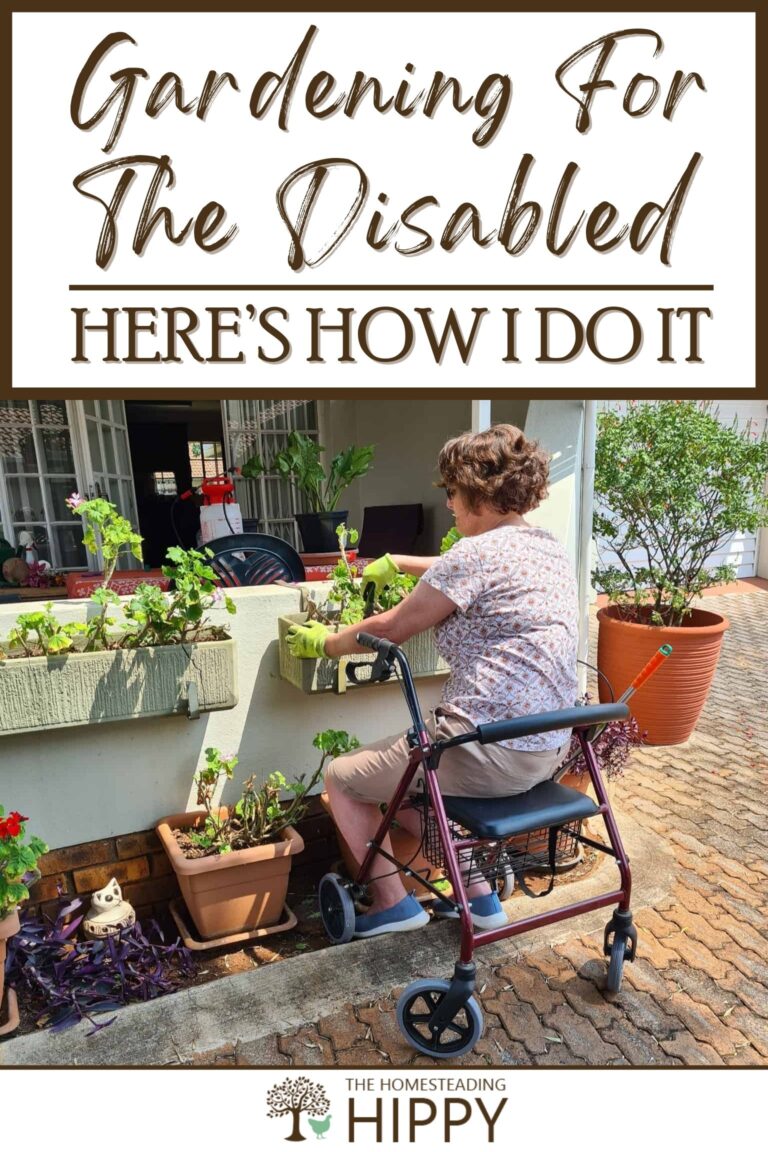

Di-Anne Devenish Seebregts was raised in an environment where daily life consisted of hiking, environmental conservation, growing fruit and vegetables, and raising poultry for meat and eggs.
She combined her passion for the writing word with her love of the pride that comes with not relying on others. She raised three children (who are now adults) to value the environment, and understand the value of being self-sufficient.
Find out more about Di-Anne on our About Us page.
